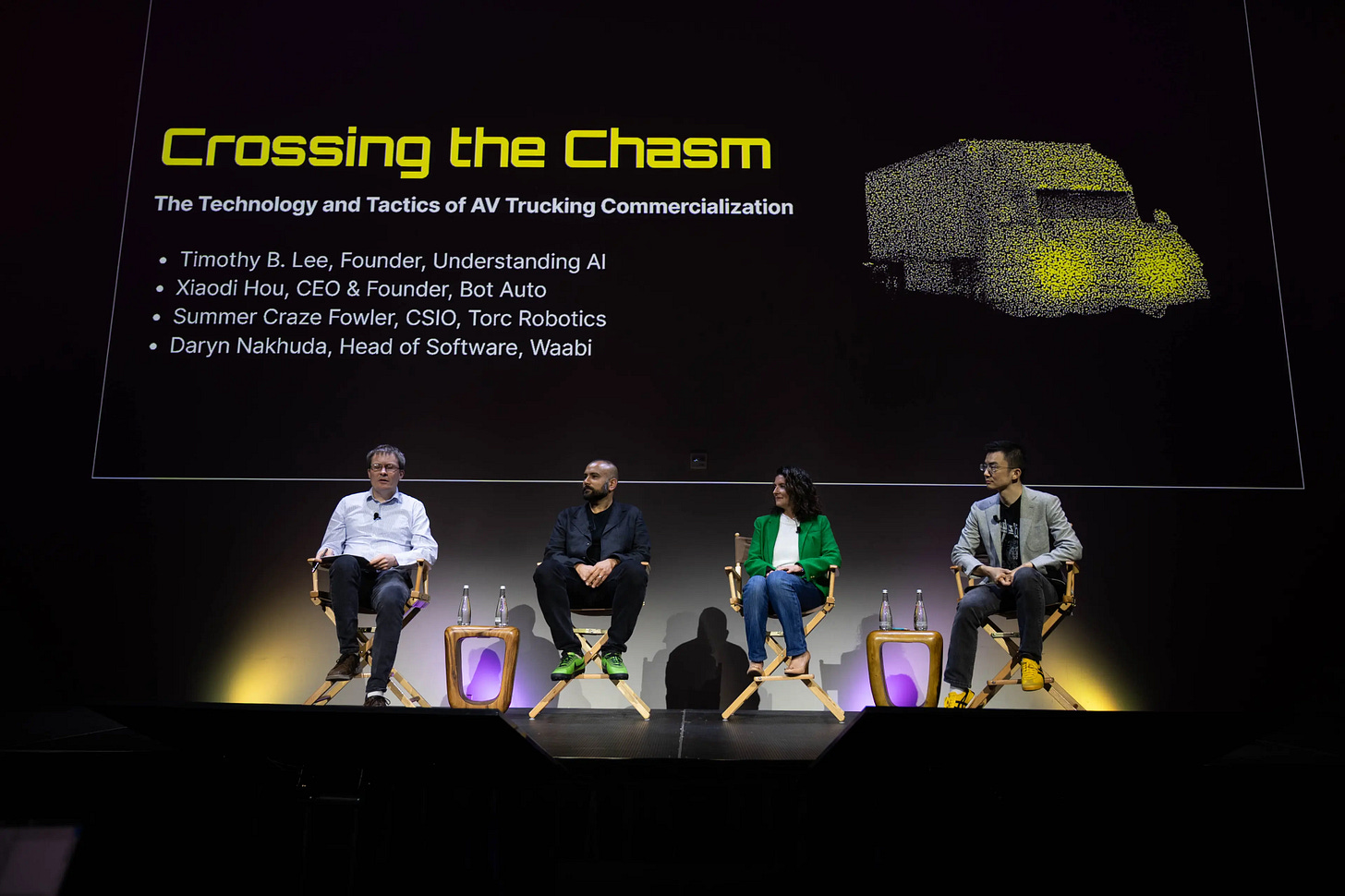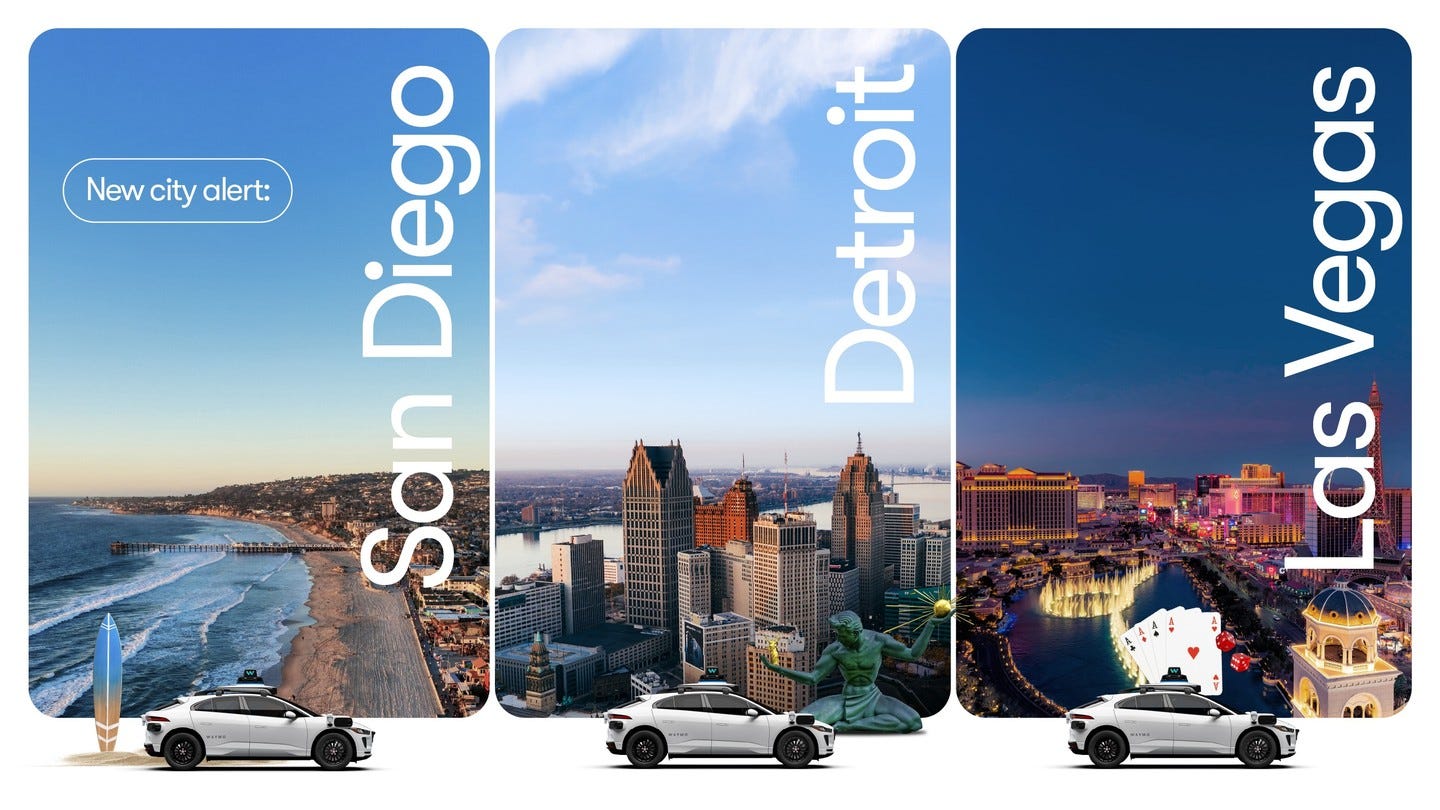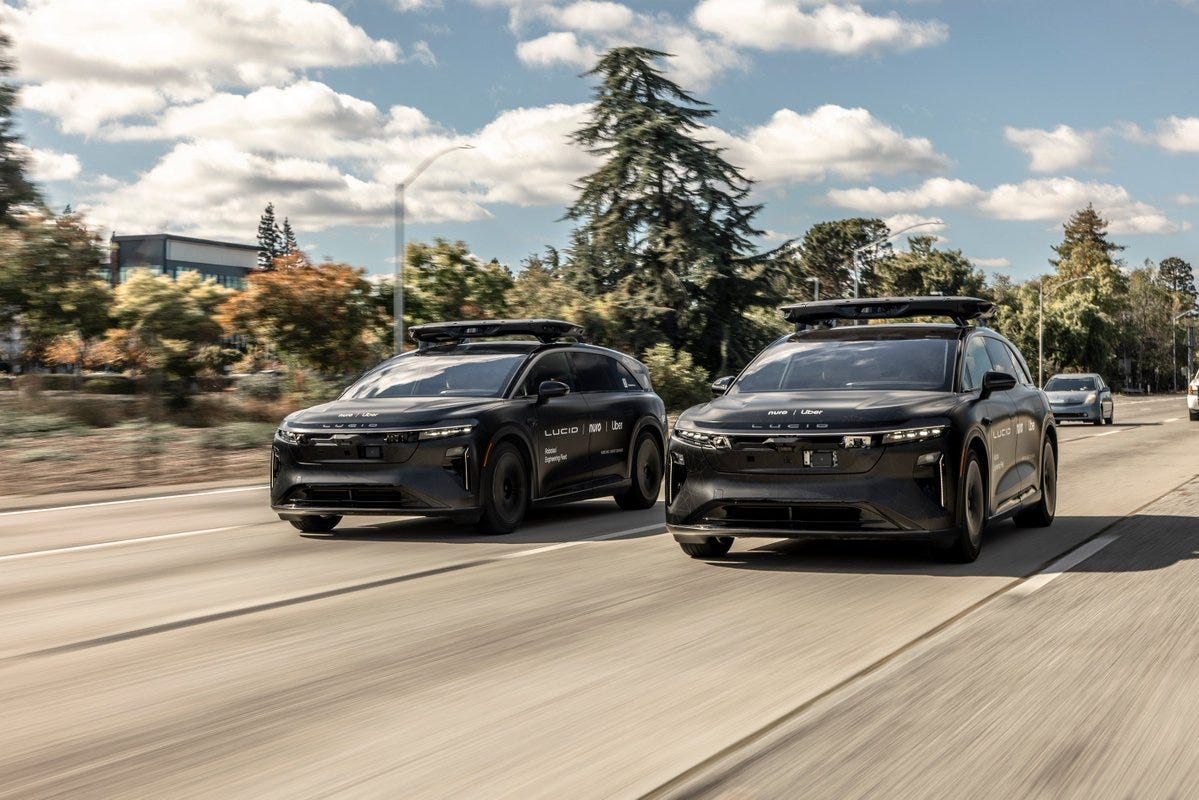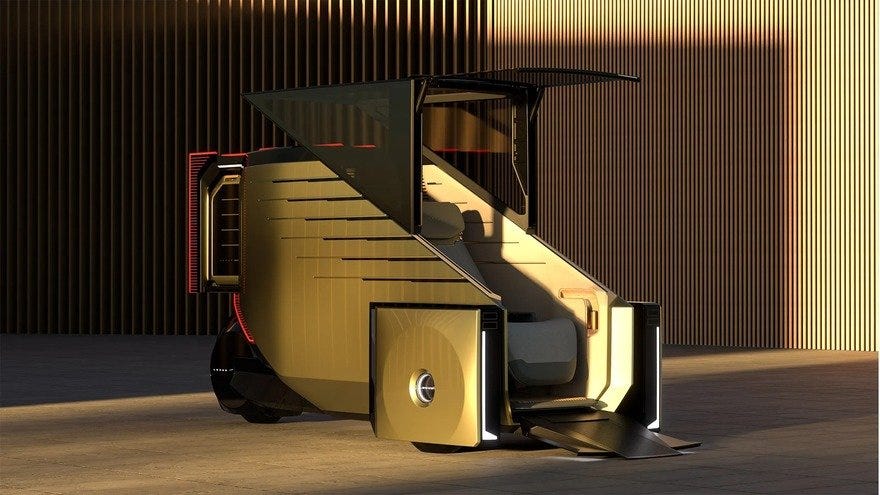Nvidia makes big moves in the robotaxi space
Plus: the Ride AI waitlist is now open!
Welcome to the Ride AI newsletter: your weekly digest of news and intelligence at the intersection of technology and transportation.
RIDE AI WAITLIST IS OPEN.
This year’s event was incredible, and next year will be even more so. If you haven’t already, join the waitlist now, as space next year will be extremely limited.
In case you missed it, Ride AI is a one day event where 250 of the most important minds and decision makers in AI, robotics, and autonomous mobility gather to present and experience, and decide the future. Our 2026 event will take place in San Francisco, on April 15, 2026 at Gallery 308 in Fort Mason. Expect a packed day full of exclusive insights, previews of the newest innovations, and newly forged connections. Additionally, Ride AI 2026 will be the first event with Waymo and Tesla Robotaxi service support. Experience the future of autonomous mobility while arriving in the future of autonomous mobility!
Now, Here’s What You Need To Know Today.
Nvidia is making major moves in the robotaxi space.
Firstly, it’s teaming up with Stellantis, Uber, and Foxconn to develop a new generation of robotaxis. Stellantis announced the collaboration as part of its renewed push into autonomous mobility, combining expertise from across the tech and transportation industries. Under the plan, Stellantis will manufacture the vehicles, Nvidia will provide its Drive AGX Hyperion 10 architecture and DriveOS software, and Foxconn will assist with hardware and systems integration. Uber will handle global deployment through its ride-hailing platform, starting in the U.S. with 5,000 vehicles once production begins in 2028.
The vehicles will be built on Stellantis’ AV-ready platforms, including the K0 Medium Size Van and STLA Small, which are designed to accommodate multiple passengers and modular autonomous systems. While Foxconn’s exact role remains somewhat undefined, the company has been seeking to expand from electronics manufacturing into vehicle production. For Uber, the partnership aligns with its goal of offering multiple robotaxi brands on its app, joining existing partnerships with Waymo, Volkswagen, and Pony.ai.
Secondly, Nvidia is teaming up with Lucid to develop advanced autonomous driving systems. The automaker plans to use Nvidia’s Drive AGX Thor platform to power a Level 4 self-driving system for its upcoming midsize EV lineup, aiming for vehicles capable of fully autonomous operation within defined areas. The system will debut in a more advanced version of Lucid’s driver-assist software on the Gravity SUV before rolling out more broadly across future models. Lucid says the collaboration is designed to create what it calls a “true eyes-off, hands-off, and mind-off” driving experience, leveraging Nvidia’s AI stack to handle continuous updates and real-time processing.
The companies also announced that Lucid will adopt Nvidia’s industrial simulation tools to design and test production lines virtually, reducing setup time and improving efficiency. Lucid’s first midsize EVs integrating Nvidia’s technology is expected in 2027.
Pony.ai has received China’s first citywide permit for fully driverless commercial robotaxi operations in Shenzhen.
The permit, jointly issued to Pony.ai and local taxi operator Xihu Group, allows the companies to deploy driverless robotaxis across Shenzhen, one of China’s largest and most tech-driven cities. Operations will begin in Nanshan, Qianhai, and Baoan before expanding citywide. The companies plan to roll out more than 1,000 units of Pony.ai’s seventh-generation robotaxi over the next few years, establishing Shenzhen as one of the world’s largest markets for commercial autonomy.
Pony.ai CEO James Peng said the project represents the launch of the company’s “asset-light and AI-empowered” model, which focuses on advancing core autonomous technologies while enabling traditional taxi operators to modernize their fleets. Xihu Group will handle fleet management and safety operations, while Pony.ai leads on software and dispatch. The company has logged more than 34.1 million autonomous miles (55 million kilometers) globally and remains the only firm authorized to operate fully driverless commercial robotaxi services in all four of China’s Tier 1 cities: Beijing, Shanghai, Guangzhou, and now Shenzhen.
I was able to experience Pony.ai’s driverless offerings within a small service area in Shenzhen earlier this year. You can find a video of my unfortunately aggressive experience below. However, it is worth highlighting that this was an earlier generation vehicle, and not technically representative of Pony.ai’s latest offerings.
Waymo is expanding its commercial robotaxi service to San Diego, Las Vegas, and Detroit.
The company said the three new markets will join its growing U.S. footprint next year, though exact launch dates have not been announced. Waymo currently operates in San Francisco, Los Angeles, Phoenix, Austin, and Atlanta, with plans to eventually reach major cities including Miami, New York, and Washington, D.C. Before operating commercially, Waymo will need regulatory approval in Nevada and Michigan, where it must secure both testing clearance and transportation network permits.
The new markets will also see the introduction of Waymo’s Zeekr RT vehicles, which are built by Geely in China, and equipped with the company’s sixth-generation hardware Waymo Driver hardware. The expansion signals Waymo’s intent to rapidly scale its fully driverless platform, and is the first time the company has publicly stated intent-to-launch of its 6th generation Zeekr-built vehicles.
Nuro has started testing its Uber-Lucid Gravity robotaxis on Bay Area roads.
The company said that the San Francisco Bay Area will be the first market for the partnership, and is aiming to launch the vehicles into service by late 2026. Nuro also revealed that “100+ Nuro-driven Lucid Gravitys” will soon be testing on the roads, suggesting the company’s plans to quickly scale its service.
I was able to do a deep dive with Nuro COO Andrew Chapin about this Uber-Lucid-Nuro deal, the largest of its kind, in a Ride AI podcast episode when the deal was announced less than three months ago. The episode is available for your listening pleasure here.
Autonomous pod concepts are making a comeback.
The latest concept, a bizarre, three-wheeled “taxi” unveiled at the 2025 Japan Mobility Show, is Lexus’s newest offering to the category. Details such as autonomy and sensor suite, range, and in-pod amenities are light as it was only just unveiled, but a brief description reveals that the pod will offer “autonomous chauffeur capability” to a luxury market, and that “its role is to deliver unparalleled luxury and presence, specifically handling the last mile of travel in urban areas.”
Would you prefer an autonomous pod over other forms of transportation? Let me know in the comments below.
In Other News…
Alright, that’s it from me… until next week. If you enjoy this newsletter, share it with your friend, colleague, or boss. Thank you for reading; Sophia out!










The Drive AGX Thor platform partnership with Lucid is particularly interesting becuase it positions NVIDIA at the premium end of the autonomy market. The 2027 timeline for Lucid's midsize EVs gives them a realistic development window compared to the overly optimistic promises we've seen elsewhere. Building out both the robotaxi infrastructure with Stellantis and premium consumer systems with Lucid shows NVIDIA is hedging across different autonomy deployment models.
Yes to luxury pods!!